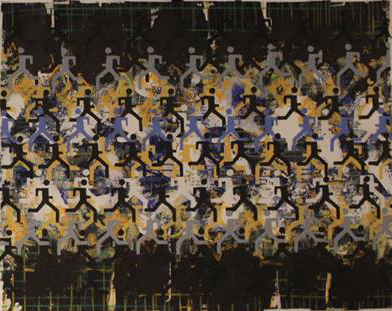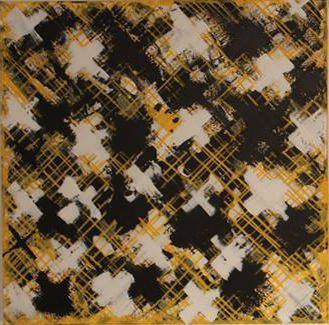
Born in 1950 in Erfurt, grew up in Suhl, and has been living in H¼pstedt, in the Eichsfelder H¼gelland, since 1974.
He has remained true to Thuringia his home, and has seen the province’s cultural openness as an opportunity to be used. His sculpting studio, located on a history-laden factory site in Dachrieden, is for him the ideal creative space, both for himself and for international sculptor congresses that he organizes from here. Through his wide circle of artist friends, he invites the whole world into his village, so to speak. In addition, he regularly works at the Schrade Gallery’s summer studio in Mochental Palace, and continually expands his horizons during frequent travels throughout Europe, where powerful sense impressions from nature, the experience of diverse cultures, and an attentive eye to historical traces all exercise an influence upon his creative work.
The sculptor Waldo Drsch introduced Ralf Klement to the foundations of sculptural design. After clay sculptures and objects from found artifacts in the 80s, he followed in the 90s with land art projects in Germany and abroad with fragile sky inscriptions and cubes made from long beech tree trunks. At the same time, Ralf Klement discovered the chain saw as a challenging instrument. Brawny and provocative in its interplay with large-scale dimensions, and nearly always with a dash of eroticism, his often gaudily-painted plants strive upward toward the sky, but Ralf Klement is also capable of a more serious tone, as his Trutzhainer hatchet, created in 2005 as a memorial to prisoners of war, so clearly demonstrates. The demanding technique of sawing and chipping off many small segments, consciously employed in this memorial, created for the artist associations with the structure of ancient Egyptian pyramids, which he pursued further in his sculptures. Fascinated by the tension between what is actually a violent way of working and the rich, filigreed-looking structure that results, he experimented with this soon afterwards in painting as well, in his lattice pictures with their horizontal and vertical boundary structures.
In his most convincing work, we find the successful coupling of a craftsman striving toward the utmost limits and a philosopher in search of life™s innermost essence. With desire and necessity, Ralf Klement describes two extreme poles of his way of living: Preasure having to work, and developing an incredible pleasure to do so in the process. This isn™t always possible, it can™t be forced or intentionally developed through a particular kind of work discipline, for example, but when these two poles come together, the artist experiences true creative exhilaration. pleasure is what spurs him on to work; when this is lacking, sitting around and doing nothing conjure up all kinds of demons. Not least in order to escape from them again, he is compelled to continue working


